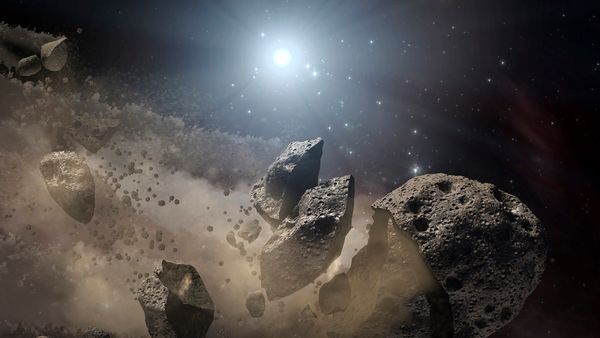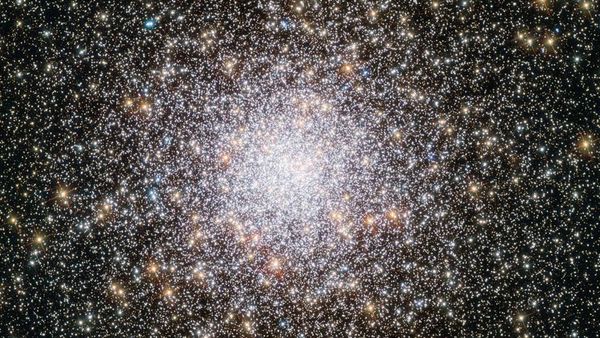
If you get into a cage match with a black hole, well, it won't be pretty. That's one of the universe's defining traits – black holes have such an immense gravitational pull that they can swallow stars whole. Except, one lucky star managed to escape a black hole's wrath, at least for a moment.
A report from the March issue of the Monthly Notices of the Royal Astronomical Society detailed how this red giant star, located in galaxy GSN 069 (about 250 million light-years from Earth), roamed just a little too close to a supermassive black hole and became ensnared in its grasp. Unlike most stars, it managed to escape the black hole's full embrace.
Advertisement
Still, the black hole's immense mass (about 400,000 times that of our sun) and gravitational pull has caused the star to be stuck in an elliptical orbit around it. Originally a red giant, the star's hydrogen-rich outer layers have been stripped by the black hole, leaving just a helium-rich core (called a white dwarf). It orbits the black hole once every nine hours, and as pieces are stripped away, they blend with other material circling the black hole. That process generates bursts of X-rays, a beacon of sorts to us Earthlings.
"It [the dwarf star] will try hard to get away, but there is no escape. The black hole will eat it more and more slowly, but never stop," said Andrew King, professor of theoretical astrophysics at the University of Leicester in the U.K. in a statement. King performed the study that found the reason for the X-ray flares.
Scientists collected the data using NASA's Chandra X-ray Observatory and the European Space Agency's XMM-Newton, an X-ray space observatory.
It's not rare for scientists to find so-called tidal disruption events, which is the polite term for when a black hole tears a star limb from limb. But they say they were incredibly fortunate to have detected evidence of a star that survived its initial black hole encounter, an event that's much rarer – partly because the encounter has a short duration of only around 2,000 years, which is just a flicker of time in terms of the universe's inner workings.
More massive stars might regularly survive black holes. But their orbits around the holes would take so much time that scientists would never have the opportunity to catalog multiple X-ray bursts the way they are now.
In the end, the white dwarf could become a planet with a mass roughly that of Jupiter's, according to King. That process could take as long as a trillion years.
Advertisement

